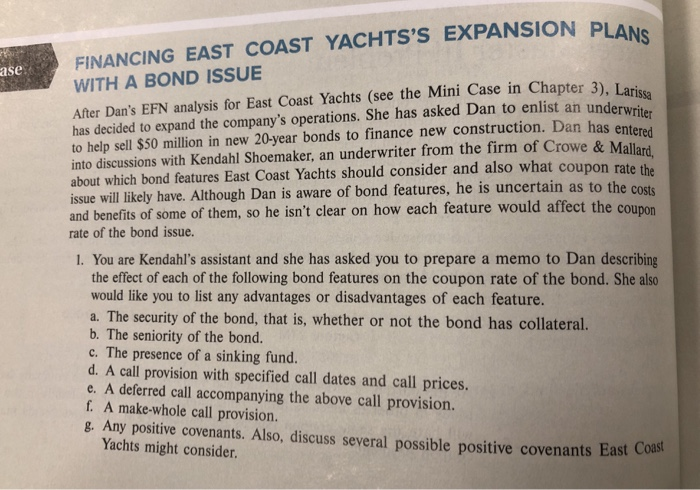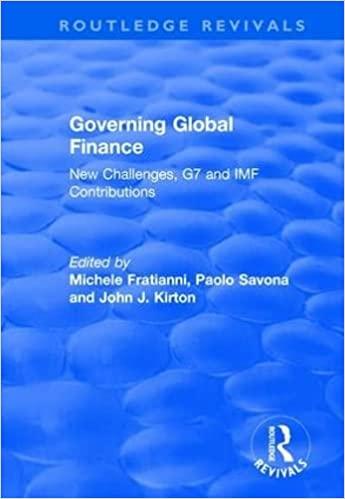PANSION PLANS ase FINANCING EAST COAST YACHTS'S EXPANSION P WITH A BOND ISSUE er 3), Larissa After Dan's EFN analysis for East Coast Yachts (see the Mini Case in Chapter 3). LA has decided to expand the company's operations. She has asked Dan to enlist an underw to help sell $50 million in new 20-year bonds to finance new construction. Dan has en into discussions with Kendahl Shoemaker, an underwriter from the firm of Crowe & Malla about which bond features East Coast Yachts should consider and also what coupon rate the issue will likely have. Although Dan is aware of bond features, he is uncertain as to the coste and benefits of some of them, so he isn't clear on how each feature would affect the coupon rate of the bond issue. 1. You are Kendahl's assistant and she has asked you to prepare a memo to Dan describing the effect of each of the following bond features on the coupon rate of the bond. She also would like you to list any advantages or disadvantages of each feature. a. The security of the bond, that is, whether or not the bond has collateral. b. The seniority of the bond. c. The presence of a sinking fund. d. A call provision with specified call dates and call prices. e. A deferred call accompanying the above call provision. f. A make-whole call provision. 8. Any positive covenants. Also, discuss several possible positive covenants East Yachts might consider. UN UUNU ValuduoM 2 69 h. Any negative covenants. Also, discuss several possible negative covenants East Coast Yachts might consider. i. A conversion feature (note that East Coast Yachts is not a publicly traded company), j. A floating rate coupon. Dan is also considering whether to issue coupon-bearing bonds or zero coupon bonds. The YTM on either bond issue will be 7.5 percent. The coupon bond would have a 6.5 percent coupon rate. The company's tax rate is 21 percent. 2. How many of the coupon bonds must East Coast Yachts issue to raise the $50 million? How many of the zeroes must it issue? 3. In 20 years, what will be the principal repayment due if East Coast Yachts issues the coupon bonds? What if it issues the zeroes? 4. What are the company's considerations in issuing a coupon bond compared to a zero coupon bond? 5. Suppose East Coast Yachts issues the coupon bonds with a make-whole call provision. The make-whole call rate is the Treasury rate plus .40 percent. If East Coast calls the bonds in seven years when the Treasury rate is 4.8 percent, what is the call price of the bond? What if it is 8.2 percent? 6. Are investors really made whole with a make-whole call provision? 7. After considering all the relevant factors, would you recommend a zero coupon issue or a regular coupon issue? Why? Would you recommend an ordinary call feature or a make- whole call feature? Why








